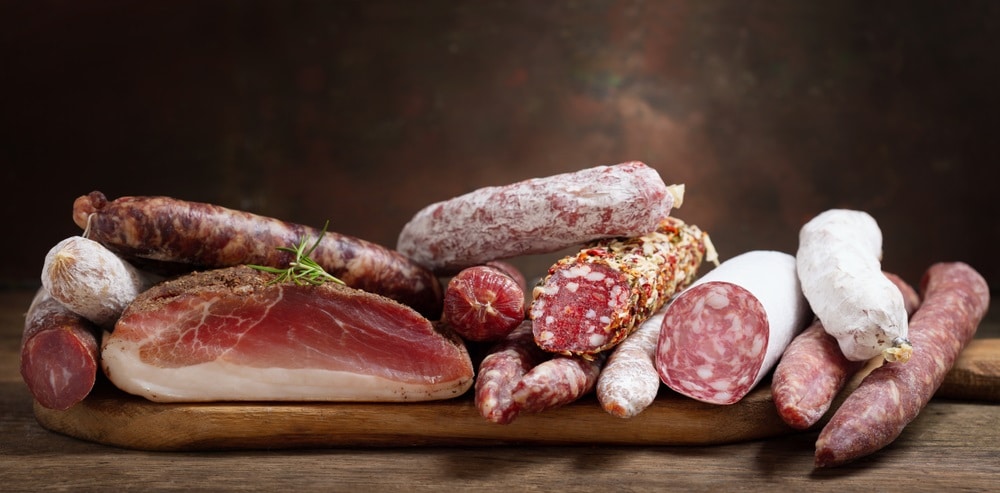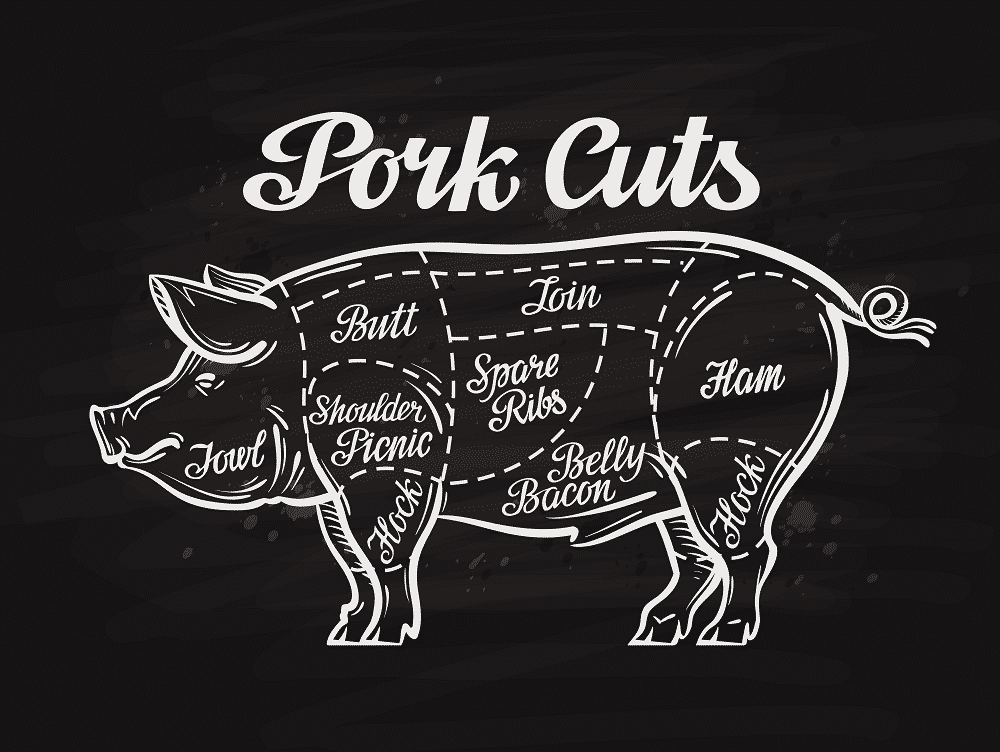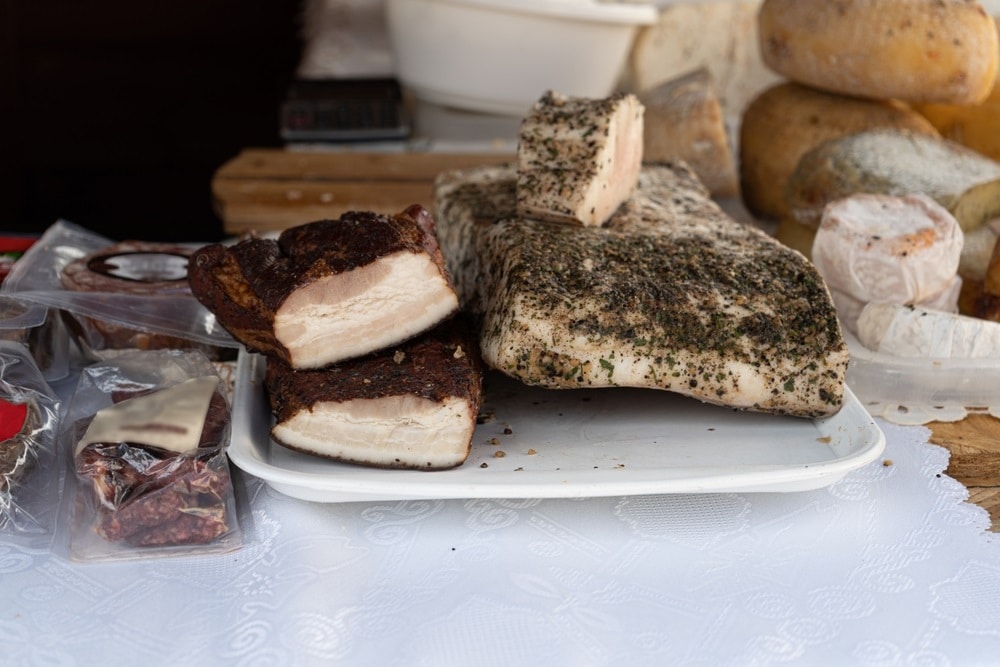
Be it eating salami in a delicious sandwich topped with mayo, mustard, and pickles, snacking on slices of salami with cheese, or enjoying it on a pizza, salami is a very popular cured meat sausage the world over.
However, some people have a question, “Is salami pork?” Well, yes and no. Read on and find out what goes into some of the various types of salami sausage.
What Is Salami?
Salami is a type of cured sausage which typically made by air-drying and fermenting ground pork meat, salt, and spices. It started as a means of preserving fresh meat for several months or even years.
Where Did Salami Originate?
The word salami comes from the Latin word for salt. The cured sausage is thought to have its origins in Italy where it was simply fermented and air-dried pork sausage.
It is, however, also popular among many other European countries such as Hungary, Romania, Bulgaria, Germany, and France. Of course, these countries dispute the sausage’s origins.
While at first salami was made with pork, today it is also sometimes made with other types of meat or a mixture of them such as venison, mutton, beef, and even horse!
What Is the Basic Salami-Making Process?
Salami is made by mincing various cuts of meat and fat together in the right proportions, adding a cure, then herbs, garlic, wine, and salt for flavor.
Once mixed together, everything is stuffed into sausage casings and left to ferment and air dry. Some salamis are left for years.
Is Salami Pork?
The straightforward is YES, salami is pork if we look at the traditional form. However, as we’ve seen, salami is also made with beef, veal, and sometimes even donkey meat!
So, salami can be made from other types of meat and beef is usually used for the kosher version. The salami made from beef will usually be labeled as kosher on the packaging.
In addition to beef and pork, salami can be made from turkey and venison. In northern Italy, goose salami is fairly common. Donkey meat is used for making salami around the Provence region in France so look out for it if you are ever there!
The usual flavoring ingredients added to salami are garlic, salt, white pepper, herbs, wine, and vinegar. Nuts are added in some regions.
Let’s examine some types of salami in more detail.
1. Cacciatore
The word means “hunter” in Italian. Cacciatore salamis are small and the meat is usually quite coarsely ground. It originated in northern Italy where hunters would carry some around in their pouches to snack on.
Because the sausages are small, they cure quickly – within 3 weeks. Cacciatore salami is made with pork loin and belly and flavored with red wine and garlic.
2. Genoa
Many believe that Genoa salami originated in Genoa, Italy, hence the name. In this region, it is difficult to farm cattle so pigs are traditionally raised here instead. As a result, this salami contains mainly pork but is sometimes mixed with a little veal.
It is not as coarsely ground as cacciatore salami but rather has a smoother, medium-ground texture. Seasonings include a lot of garlic, as well as peppercorns and red wine. This salami can be made from veal meat as well as pork.
3. Lardo
Lardo is a very fatty (90% fat!) type of salami. It is pork-based and the fat comes from the back of the pig. It has been made in Tuscany in the small village of Colonnata since Roman times.
Lardo is often flavored with rosemary which is a bitter herb useful for cutting through the richness of the fat. Of course, the usual salt, garlic, and peppercorns are added.
Lardo is not for the fainthearted (or those with cholesterol issues!). It is normally served in extremely thin slices on hot toast so that it begins to melt.
4. Neapolitan
Again, this salami is made from pork but it may also be made from veal, so check the label. The meat is mixed with fat and seasoned heartily with chili, garlic, pepper, and wine.
This sausage is a deep red color from the chilies and also as a result of the meat being smoked. This gives it a distinctive flavor.
5. Felino
Felino is often referred to as the “king of salami” and once you have tasted it, you will know why. It has a smooth texture and an astoundingly sweet, mild flavor.
This one is made with pork flavored with minimal spices, peppercorns, and wine. It is aged slowly to enhance the sweetness.
6. Soppressata
This boldly-flavored salami is made from the tongue, belly, or stomach meat of the pig. It is seasoned with herbs and spices, but these seasonings will change from one region to another.
This is probably the most popular salami version in the U.S. apart from pepperoni.
7. Pepperoni
This salami probably originated in the U.S., not in Italy. Legend says it was made by an Italian immigrant. It is a boldly-flavored sausage that is the most widely-used pizza topping in the U.S. (Up to 50% of pizza orders include it.)
Pepperoni contains pork, and often beef too. For flavor, paprika, chilies, garlic, fennel and cayenne pepper are used.
8. Hard Salami
This salami is famous around Eastern Europe and is either made from pork or the pork-beef blend. However, it is smoked after curing. As far as the flavor is concerned, it has a mild flavor, but the texture is often dry yet firm.
To Conclude
The bottom line is that salami is usually made from pork and is even minced with pork fat (pig has extremely high-quality, flavorsome fats).
However, there are also various types of salami made from other types of meat. If you enjoy salami but prefer not to eat pork, you are sure to find one to suit you.


